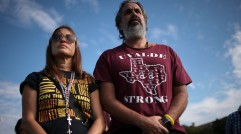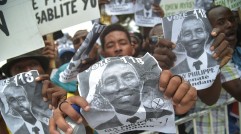How Safe Is America’s Newest National Park Despite ‘Most Nuke Polluted’ State?
The highly anticipated latest project of the U.S. Government in building a new national park to showcase America's nuclear production site has just been signed as a new public park for students, businesses and other individuals to get a glimpse of what took place back in 1943 when the U.S. initiated the production of plutonium, a key ingredient in making nuclear weapons.
The news comes after the secretary of interior and secretary of energy have announced their agreement to handle the operations in the newest national park called the Manhattan Project National Historical Park. The initiative was signed into an agreement and is now in full effect since Nov. 10, according to the Federal Register.
The park's opening, which comes with the acceptance of tours from school groups and other tourists, will be from April until October next year, the Associated Press reveals. The former nuclear production site had famously been known to be the most polluted facility and the world's first full-sized nuclear reactor located near Richland, 320 kilometers east of Seattle in south-central Washington State.
Furthermore, the park will be showcasing the famed B Reactor, which was created and developed for the production of plutonium to hold the Trinity test blast in New Mexico and the atomic bomb, which was dropped on Nagasaki, Japan back in August 1945 that had the Japanese surrender to the U.S., the news outlet reports.
The reactor was revealed to be made in only a limited amount of time and revolutionized history. "What happened at B Reactor changed the course of human history," Chip Jenkins of the National Park Service said as quoted by the publication. "They went from sparsely populated ranching communities to the first packet of plutonium over the course of 18 months."
Furthermore, Jenkins revealed the goal of the park. "The intention of the park is to tell the full and complex and convoluted story," Jenkins added. "That story is still being developed, but will certainly include a Japanese perspective."
The news comes with the issue of whether the park will be safe enough for people to take pictures and to sit on the actual control rooms and other materials in the site. However, Colleen French, the U.S. Department of Energy's program manager for the Hanford Nuclear Reservation, assured the public that the site is ready for public's viewing and visit.
"Everything is clean and perfectly safe," French said as quoted by the publication. "Any radioactive materials are miles away." Meanwhile, Chip Jenkins of the National Park Service revealed what is really the goal of the park.
Subscribe to Latin Post!
Sign up for our free newsletter for the Latest coverage!
* This is a contributed article and this content does not necessarily represent the views of latinpost.com














